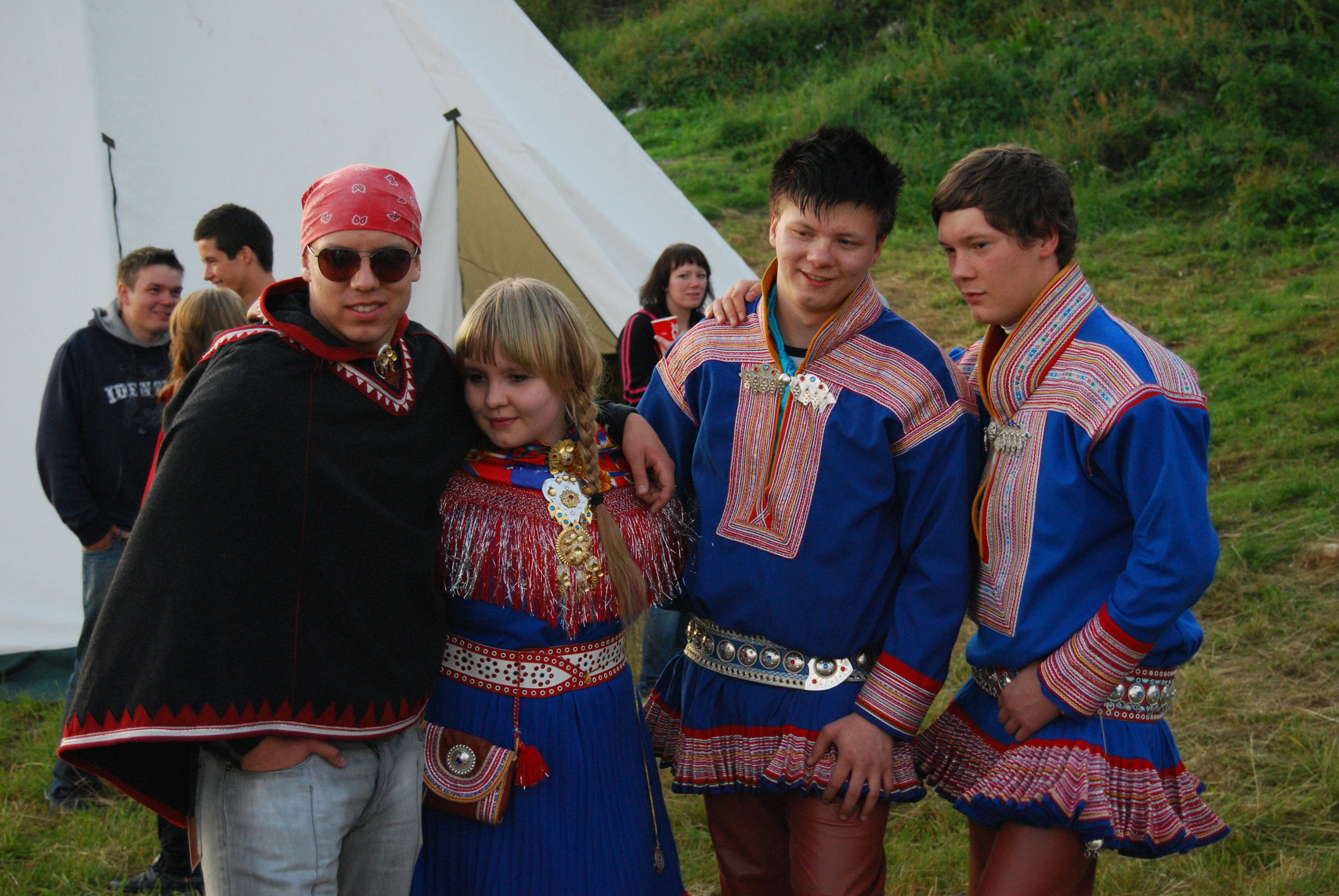Luhkka on:
[Wikipedia]
[Google]
[Amazon]
 The luhkka (
The luhkka (
 The luhkka (
The luhkka (North Sami
North is one of the four compass points or cardinal directions. It is the opposite of south and is perpendicular to east and west. ''North'' is a noun, adjective, or adverb indicating direction or geography.
Etymology
The word ''north'' is ...
''luhkka'') is an article of winter clothing
Winter clothing are clothes used for protection against the particularly cold weather of winter. Often they have a good water resistance, consist of multiple layers to protect and insulate against low temperatures.
Winter clothes are especially o ...
that covers the top half of a person's body. It is a poncho
A poncho (; qu, punchu; arn, pontro; "blanket", "woolen fabric") is an outer garment designed to keep the body warm. A rain poncho is made from a watertight material designed to keep the body dry from the rain. Ponchos have been used by the ...
-like hooded cape with the hem coming down to the wearer's elbow or wrist. Luhkka are made from thick wadmal
Wadmal (Old Norse: ; Norwegian: , 'cloth measure') is a coarse, dense, usually undyed wool fabric woven in Iceland, Norway, Sweden, Denmark, Greenland, and the Orkney, Faroe and Shetland Islands from the Middle Ages into the 18th century. Wad ...
. It is used by the Sami
Acronyms
* SAMI, ''Synchronized Accessible Media Interchange'', a closed-captioning format developed by Microsoft
* Saudi Arabian Military Industries, a government-owned defence company
* South African Malaria Initiative, a virtual expertise net ...
of northern Scandinavia and Finland and is traditionally worn on top of the Sami gákti
Gákti is a piece of traditional clothing worn by the Sámi in northern areas of Norway, Sweden, Finland and the Kola Peninsula in Russia. The gákti is worn both in ceremonial contexts and while working, particularly when herding reindeer. The ...
or fur coat (''beaska
Beaska is a coat made of reindeer fur used by the Sami people, particularly in Torne. In Gällivare ''beaska'' means thicker fur and is mainly used by the richer people. In Northern Sami language it could also mean ''newer fur'' as it was of you ...
'').

Sources
* * Sámi clothing {{clothing-stub